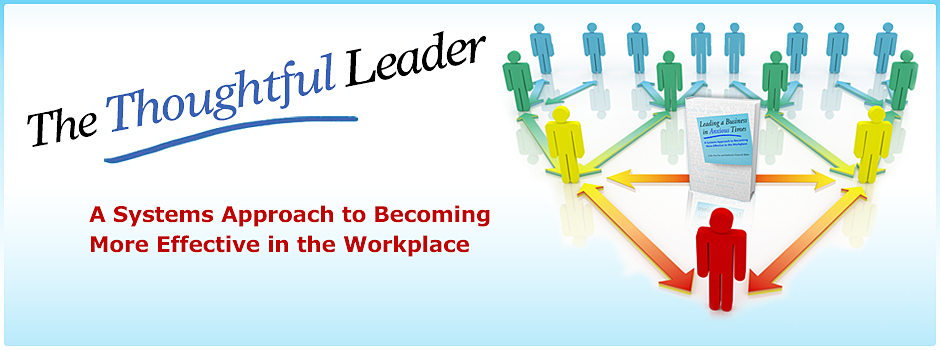Distinguishing leadership and management in organizations is critical for clear thinking about the roles, responsibilities and performance of people in positions of authority as well as those of the individuals who report to them. In our book Leading a Business in Anxious Times, Katharine Baker and I define leadership as “a relationship process among members of an organization that inspire them to take full advantage of opportunities, recognize and minimize threats to success, and avoid catastrophic failures” (page 19.) Framed as a relationship process, leadership is by definition reciprocal, and the outcomes are products of the relationships among people—the owners, executives, directors, managers, supervisors, employees, consultants, customers, vendors, etc. Thus the quality of the relationships in the workplace speaks to the quality of leadership.
Individuals who are responsible for accomplishing the work of the organization—the day to day operations, process improvements, implementing changes, etc. are often called managers. They usually decide policies, establish procedures, control allocation of resources, schedules, and evaluate performance against quality standards, and they are often responsible for hiring and firing of personnel. When outcomes are disappointing, you might hear them say, I really don’t like to “manage people”. In that context, I don’t see them as poor managers; rather I see them as poor leaders. I have a bias against the concept of any individual “managing other people” because it fosters one-directional thinking, without regard for the reciprocity of human behavior in social systems. All parties play a part in the product of their relationship. Thinking of business management as managing people keeps managers’ thinking other-focused rather than keeping it focused on their own behavior. The obvious point here is that individuals can change or manage their own behavior to create an environment where others have the opportunity to perform well, but they cannot change the behavior of others. That’s a by-product of high functioning leadership.
Leadership and management, as it is commonly understood in today’s organizations, are not mutually exclusive. Successful managers also provide leadership. They inspire people to perform and the most successful ones inspire exceptional performance—performance that results in successful outcomes for all stakeholders. However, leadership need not only come from managers or from others in positions of authority. Every employee in an organization can and often does provide leadership at different times around various challenges. Successful organizations develop a culture of leadership—with widespread recognition that the organization is a natural system of mutually interdependent individuals who are responsible for managing themselves in mature ways. Such organizations have leaders throughout that foster open discussion and collaboration, mutual respect, and decision making that is in the best interest of the whole organization.
Leslie Ann Fox, CEO, Care Communications, Inc. January 29, 2010
